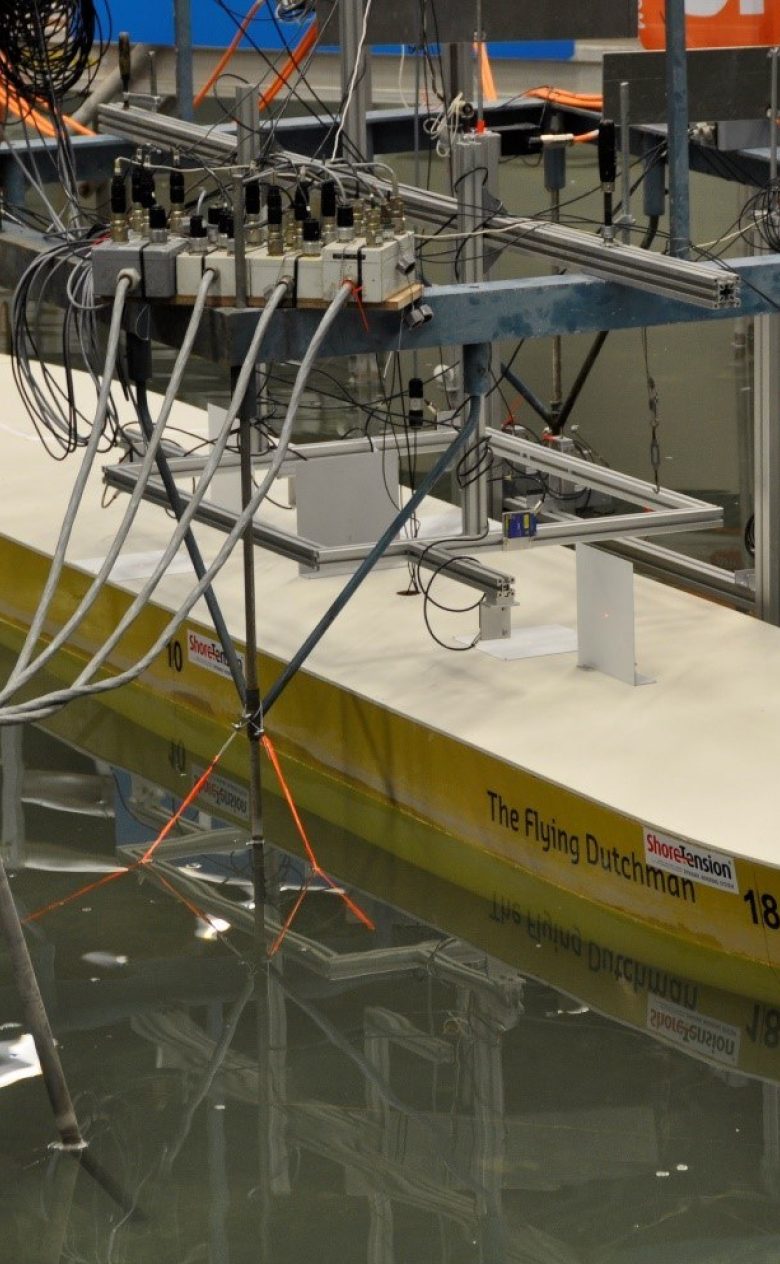Innovative mooring technology in ports of the future
In collaboration with Shoretension, Royal HaskoningDHV, MARIN, Vopak and Shell, Deltares is looking at the possibilities for innovative mooring technology in the ports of the future, where sustainability and economic vitality are vital. These ports will very probably look different from the ones we know today.

One of the leading new concepts for the port of the future is the open port. An open port has less impact on the coastal zone, but the berths are more exposed to waves. It places more stringent demands on the mooring system that keeps vessels in place during loading and unloading. New innovative mooring systems could provide a solution. In order to determine the limits of these mooring techniques, scale-model tests have been carried out in the Delta Basin, the Deltares 3D wave basin. Innovative mooring systems play a crucial role in the step towards more sustainable ports where the environmental impact is kept to a minimum.
The overall aim of this project was to explore the limits and possibilities of innovative mooring of vessels in the Port of the Future and to provide a solid database for validation of numerical models simulating the performance of these innovative mooring solution. The mooring technique studied in this project was the ShoreTension (ST) system. This system is used in combination with conventional mooring lines and actively controls the line forces by giving out or hauling in the mooring lines, and therewith minimizing the motions of a moored vessel.
With respect to the ST system, the main system-specific goals of this project were to verify the application limits of the ST system with respect to wave height (for the most critical response periods) and to optimise the system settings to maximise the applicability range of the system. In this way the applicability limits of the system may be enlarged compared to present understanding and expectations of the system.
Physical scale model tests of a moored vessel were performed in Deltares’ Delta Basin with one vessel size/type and one draft-depth ratio for four different mooring configurations. The vessel was tested in three series of different types of wave conditions with increasing complexity (monochromatic, bi-chromatic and irregular waves) and wave heights. The wave periods were selected such that they corresponded to, or were almost equal to, the natural periods of the moored vessel. In this way the tested situations corresponded to the most challenging wave conditions for the ST system.
You have not yet indicated whether you want to accept or reject cookies. This means that this element cannot be displayed.
Or go directly to:
The tests showed that the ST system effectively reduces low-frequency horizontal wave motions (surge, sway and yaw). In traditional ports these are generally normative. When developing new port concepts in which innovative mooring techniques are applied it should be considered that other aspects will become normative (e.g. roll motions). To be able to assess these situations, well-validated numerical tools are necessary. The systematically generated measurement database together with this report provide a proper basis for the validation of numerical representations of the ST system.
The scale model results form a solid verification of the functionality and performance of the innovative mooring system. The results will help to increase acceptability of the ST system (and similar techniques) throughout the waterborne transport community and for use in the Port of the Future. In addition, the explored applicability limits of the ST system may diversify and extend the fields of application of the system.
A paper on the study results has been prepared and presented at the OMAE conference of 2020 (available on request). Reijmerink, S.P., N. Bruinsma, A.J. van der Hout, M.P.C. de Jong, C. Clement, 2020, Innovative mooring in the Port of the Future: Scale model testing of the ShoreTension system, OMAE2020, June 28-July-3, 2020, online.


